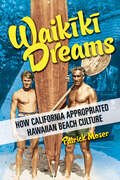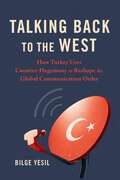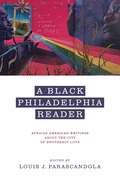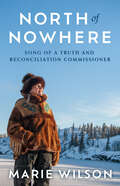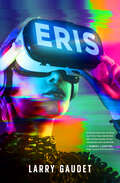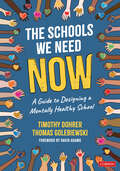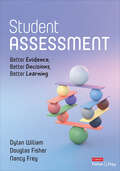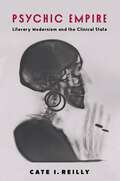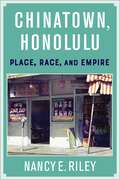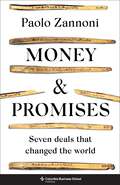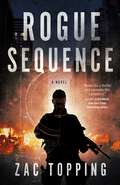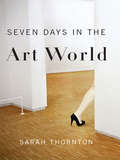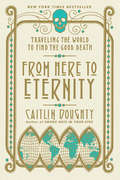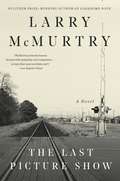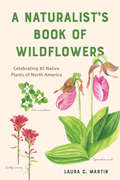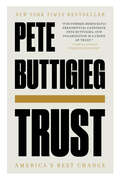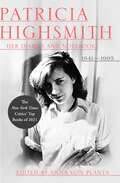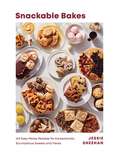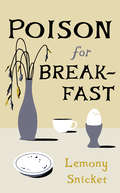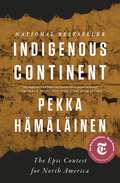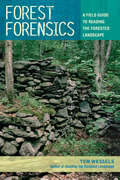- Table View
- List View
Waikiki Dreams: How California Appropriated Hawaiian Beach Culture (Sport and Society)
by Patrick MoserDespite a genuine admiration for Native Hawaiian culture, white Californians of the 1930s ignored authentic relationships with Native Hawaiians. Surfing became a central part of what emerged instead: a beach culture of dressing, dancing, and acting like an Indigenous people whites idealized. Patrick Moser uses surfing to open a door on the cultural appropriation practiced by Depression-era Californians against a backdrop of settler colonialism and white nationalism. Recreating the imagined leisure and romance of life in Waikīkī attracted people buffeted by economic crisis and dislocation. California-manufactured objects like surfboards became a physical manifestation of a dream that, for all its charms, emerged from a white impulse to both remove and replace Indigenous peoples. Moser traces the rise of beach culture through the lives of trendsetters Tom Blake, John “Doc” Ball, Preston “Pete” Peterson, Mary Ann Hawkins, and Lorrin “Whitey” Harrison while also delving into California’s control over images of Native Hawaiians via movies, tourism, and the surfboard industry. Compelling and innovative, Waikīkī Dreams opens up the origins of a defining California subculture.
Talking Back to the West: How Turkey Uses Counter-Hegemony to Reshape the Global Communication Order (Geopolitics of Information)
by Bilge YesilIn the 2010s, Turkey’s ruling Justice and Development Party (AKP) began to mobilize an international media system to project Turkey as a rising player and counter foreign criticism of its authoritarian practices. Bilge Yesil examines the AKP’s English-language communication apparatus, focusing on its objectives and outcomes, the idea-generating framework that undergirds it, and the implications of its activities. She also analyzes the decolonial and pan-Islamist messages AKP-sponsored outlets deploy to position Turkey as a burgeoning great power opposed to imperialism and claiming to be the voice of oppressed Muslims around the world. As the AKP wields this rhetoric to further its geopolitical and economic goals, media outlets pursue their own objectives by obfuscating facts with identity politics, demonizing the West to aggrandize the East and rallying Muslims under Turkey’s purportedly benevolent leadership. Insightfully exploring the crossroads of communications and authoritarianism, Talking Back to the West illuminates how the Erdogan government and its media allies use history, religion, and identity to pursue complementary agendas and tighten the AKP’s grip on power.
A Black Philadelphia Reader: African American Writings About the City of Brotherly Love
by Louis J. ParascandolaThe relationship between the City of Brotherly Love and its Black residents has been complicated from the city’s founding through the present day. A Black Philadelphia Reader traces this complex history in the words of Black writers who were native to, lived in, or had significant connections to the city. Featuring the works of famous authors—including W. E. B. Du Bois, Harriet Jacobs, Sonia Sanchez and John Edgar Wideman—alongside lesser-known voices, this reader is an immersive and enriching composite portrait of the Black experience in Philadelphia. Through fiction and nonfiction, poetry and prose, readers witness episodes of racial prejudice and gender inequality in areas like public health, housing, education, policing, criminal justice, and public transportation. And yet amid these myriad challenges, the writers convey an enduring faith, a love of family and community, and a hope that Philadelphia will fulfill its promises to its Black citizens.Thoughtfully introduced and accompanied by notes that contextualize the works and aid readers’ comprehension, this book will appeal to a wide audience of Philadelphians and other readers interested in American, African American, and urban studies.
North of Nowhere: Song of a Truth and Reconciliation Commissioner
by Marie WilsonThe incomparable first-hand account of the historic Truth and Reconciliation Commission of Canada told by one of the commissioners who led it. The Truth and Reconciliation Commission was established to record the previously hidden history of more than a century of forced residential schooling for Indigenous children. Marie Wilson helped lead that work as one of just three commissioners. With the skills of a journalist, the heart of a mother and grandmother, and the insights of a life as the spouse of a residential school survivor, Commissioner Wilson guides readers through her years witnessing survivor testimony across the country, providing her unique perspective on the personal toll and enduring public value of the commission. In this unparalleled account, she honours the voices of survivors who have called Canada to attention, determined to heal, reclaim, and thrive. Part vital public documentary, part probing memoir, North of Nowhere breathes fresh air into the possibilities of reconciliation amid the persistent legacy of residential schools. It is a call to everyone to view the important and continuing work of reconciliation not as an obligation but as a gift.
Eris
by Larry GaudetAn anarchist online group sets out to assassinate the corporate elites they believe have turned culture into a digital nightmare.“A blistering look at what our online and offline lives have devolved into at the hands of our corporate tech overlords and their lackeys in government.” — ROBERT J. SAWYER, Hugo Award–winning authorDon Barton is the visionary creator of Greenhouse, a popular immersive game where millions play at “saving the environment” in the surreal digital landscapes of the metaverse. Now retired to his plutocratic wealth, he learns his teen son, a gifted gamer, has suddenly gone missing, having joined a terrorist group led by a mysterious young woman, Eris, a former cryptocurrency trader. She’s on a mission to destroy the world’s entertainment and social media platforms and assassinate the corporate elites who run them.In desperation, Barton roams Greenhouse, the only place his radicalized son will talk to him, learning that the game — his life’s work — is on the terrorist hit list. And both his life and his son’s are in danger.A RARE MACHINES BOOK
The Schools We Need Now: A Guide to Designing a Mentally Healthy School
by Timothy Dohrer Thomas GolebiewskiPlace mental health at the heart of schooling Our students have always needed our support, but recent events have brought to the forefront the challenges K-12 schools face in supporting their mental health. Now is the time to transform schools into safe and healthy places that enable students not only to learn but thrive. Based on decades of research and proven examples from education professionals and the authors, experts in school leadership and social work, The Schools We Need Now highlights the importance of placing mental health at the heart of schooling and shares a vision for schools that prioritizes student well-being. Inside you’ll discover: Practical ways to improve school climate and mitigate the effects of students’ stress, trauma, depression, and anxiety Preventive activities, school transition and crisis response plans, and community collaboration strategies How to create a comprehensive Mental Health Action Plan that is grounded your school’s culture and climate Examples of schools, classrooms, and organizations that are on the leading edge of creating the schools we need now For every educator who wants to ensure a healthy and equitable school environment for all students, The Schools We Need Now shows you how to create a safe place that protects and supports their academic, social, emotional, and physical growth.
The Schools We Need Now: A Guide to Designing a Mentally Healthy School
by Timothy Dohrer Thomas GolebiewskiPlace mental health at the heart of schooling Our students have always needed our support, but recent events have brought to the forefront the challenges K-12 schools face in supporting their mental health. Now is the time to transform schools into safe and healthy places that enable students not only to learn but thrive. Based on decades of research and proven examples from education professionals and the authors, experts in school leadership and social work, The Schools We Need Now highlights the importance of placing mental health at the heart of schooling and shares a vision for schools that prioritizes student well-being. Inside you’ll discover: Practical ways to improve school climate and mitigate the effects of students’ stress, trauma, depression, and anxiety Preventive activities, school transition and crisis response plans, and community collaboration strategies How to create a comprehensive Mental Health Action Plan that is grounded your school’s culture and climate Examples of schools, classrooms, and organizations that are on the leading edge of creating the schools we need now For every educator who wants to ensure a healthy and equitable school environment for all students, The Schools We Need Now shows you how to create a safe place that protects and supports their academic, social, emotional, and physical growth.
Student Assessment: Better Evidence, Better Decisions, Better Learning
by Douglas Fisher Nancy Frey Dylan WiliamFuel student-driven success and enhance learning with better assessment What if there was a better way to collect and interpret assessment data that could strengthen the link between teaching and learning? Student Assessment: Better Evidence, Better Decisions, Better Learning is the innovative guide to show you how it′s done and done right. This unique book offers a new assessment model focused on decision-driven data collection and provides an arsenal of tools for collecting better evidence to increase student learning. You will learn: the importance of assessment in the teaching and learning process what a decision-driven data collection assessment model looks like and how it differs from a more traditional data-driven decision-making model how to effectively establish learning intentions and success criteria within assessments to actively engage students in their own learning how to implement an array of assessment tools that yield better evidence and improve decision-making how to address the challenge of ensuring authenticity in students′ responses when AI-generated content is becoming more common With this guide in hand, you′ll be ready for a better approach to assessment—armed with practical tools and strategies to ensure students can analyze, synthesize, adapt, critique, and most importantly, take charge of their own learning.
Student Assessment: Better Evidence, Better Decisions, Better Learning
by Douglas Fisher Nancy Frey Dylan WiliamFuel student-driven success and enhance learning with better assessment What if there was a better way to collect and interpret assessment data that could strengthen the link between teaching and learning? Student Assessment: Better Evidence, Better Decisions, Better Learning is the innovative guide to show you how it′s done and done right. This unique book offers a new assessment model focused on decision-driven data collection and provides an arsenal of tools for collecting better evidence to increase student learning. You will learn: the importance of assessment in the teaching and learning process what a decision-driven data collection assessment model looks like and how it differs from a more traditional data-driven decision-making model how to effectively establish learning intentions and success criteria within assessments to actively engage students in their own learning how to implement an array of assessment tools that yield better evidence and improve decision-making how to address the challenge of ensuring authenticity in students′ responses when AI-generated content is becoming more common With this guide in hand, you′ll be ready for a better approach to assessment—armed with practical tools and strategies to ensure students can analyze, synthesize, adapt, critique, and most importantly, take charge of their own learning.
Psychic Empire: Literary Modernism and the Clinical State (Modernist Latitudes)
by Cate I. ReillyIn nineteenth-century imperial Germany and the Austro-Hungarian Empire, new scientific fields like psychophysics, empirical psychology, clinical psychiatry, and neuroanatomy transformed the understanding of mental life in ways long seen as influencing modernism. Turning to the history of psychiatric classification for mental illnesses, Cate I. Reilly argues that modernist texts can be understood as critically responding to objective scientific models of the psyche, not simply illustrating their findings. Modernist works written in industrializing Central and Eastern Europe historicize the representation of consciousness as a quantifiable phenomenon within techno-scientific modernity.Looking beyond modernism’s well-studied relationship to psychoanalysis, this book tells the story of the non-Freudian vocabulary for mental illnesses that forms the precursor to today’s Diagnostic and Statistical Manual of Mental Disorders. Developed by the German psychiatrist Emil Kraepelin in the 1890s, this psychiatric taxonomy grew from the claim that invisible mental illnesses were analogous to physical phenomena in the natural world. Reilly explores how figures such as Georg Büchner, Ernst Toller, Daniel Paul Schreber, Nikolai Evreinov, Vsevolod Ivanov, and Santiago Ramón y Cajal understood the legal and political consequences of representing mental life in physical terms. Working across literary studies, the history of science, psychoanalytic criticism, critical theory, and political philosophy, Psychic Empire is an original account of modernism that shows the link between nineteenth-century scientific research on the mental health of national populations and twenty-first-century globalized, neuroscientific accounts of psychopathology and sanity.
Chinatown, Honolulu: Place, Race, and Empire
by Nancy E. RileyThe Chinese experience in Hawai‘i has long been told as a story of inclusion and success. During the Cold War, the United States touted the Chinese community in Hawai‘i as an example of racial harmony and American opportunity, claiming that all ethnic groups had the possibility to attain middle-class lives. Today, Honolulu’s Chinatown is not only a destination for tourism and consumption but also a celebration of Chinese accomplishments, memorializing past discrimination and present prominence within a framework of multiculturalism. This narrative, however, conceals many other histories and processes that played crucial roles in shaping Chinatown.This book offers a critical account of the history of Chinese in Hawai‘i from the mid-nineteenth century to the present in this context of U.S. empire, settler colonialism, and racialization. Nancy E. Riley foregrounds elements that are often left out of narratives of Chinese history in Hawai‘i, particularly the place of Native Hawaiians, geopolitics and U.S. empire building, and the ongoing construction of race and whiteness. Tracing how Chinatown became a site of historical remembrance, she argues that it is also used to reinforce the ideology of neoliberal multiculturalism, which upholds racial hierarchy by lauding certain ethnic groups while excluding others. An insightful and in-depth analysis of the story of Honolulu’s Chinatown, this book offers new perspectives on the making of the racial landscape of Hawai‘i and the United States more broadly.
Money and Promises: Seven Deals That Changed the World
by Paolo ZannoniWhere did modern banking come from—and how does this history help us understand financial crises?In the twelfth century, Pisa was a thriving metropolis, a powerhouse of global trade, and a city that stood at the center of medieval Europe. But Pisa had a problem: Money came in the form of coins, and they were becoming scarce. In the face of this financial and monetary crisis, the foundations of modern banking were laid.In Money and Promises, the distinguished banker, executive, and historian Paolo Zannoni examines the complex relationship between states and banks that has changed the world. Drawing on in-depth archival research, he explores seven case studies: the republic of Pisa, seventeenth-century Venice, the early years of the Bank of England, imperial Spain, the Kingdom of Naples, the nascent United States during the American Revolution, and Bolshevik Russia in 1917 through 1923. Zannoni also tells the story of how the Continental Congress established the first public bank in North America, exploring the roles of Thomas Jefferson, Benjamin Franklin, and Alexander Hamilton. Spanning many countries, political systems, and historical eras, this book shows that at the heart of these institutions is an intricate exchange of debts and promises that shaped the modern world as we know it.
Yesterdays
by Harold Sonny LadooA rediscovered classic, Yesterdays turns colonialism on its head.Originally published in 1974, Yesterdays is nominally the story of one man’s attempt to launch a Hindu Mission from Trinidad to convert the heathen Christians of Canada. Yet this conceit quickly derails into a ribald, outrageous portrait of West Indian village life, and a prescient, proto-parody of what would become the archetypal 'immigrant story.' Sacred cows both figurative and literal are skewered in a series of hilarious and increasingly bawdy encounters between villagers who gossip, cheat, and steal, but also form a balanced, if chaotic, collectivity. Yesterdays is one of the great lost English-language novels of the previous century—perhaps ahead of its own time upon its initial release, but sure to appeal to 21st-century audiences who will appreciate its startling prescience, linguistic inventiveness, as well as its bold singularity amid a canon glutted with paint-by-numbers respectability."Yesterdays upends conventional narratives that find sexual liberation in the postindustrial city. Ladoo's agrarian villagers inhabit the fullness of their complex humanities in audaciously funny and often uncomfortable ways, and are radically at ease with their fluid sexual appetites. An under-appreciated gem, his novel is as much a testament to Ladoo's skillful observation and rendering of the world that surrounded him as it is to the value of being tellers of our own stories." – Andil Gosine, author of Nature's Wild: Love, Sex and Law in the Caribbean"Yesterdays is the novel, underappreciated on its initial release and since forgotten, that should have charted a deviant, audacious path through the staid self-seriousness of Canadian literature. Let's hope there's still time." – Pasha Malla, author of All You Can Kill
Rogue Sequence: A Novel (Ander Rade #1)
by Zac ToppingIt's 2091 and independent contract companies around the world are producing genetically modified soldiers…to be sold to the highest bidders.Ander Rade is a super-soldier, a genetically engineered living weapon, and has been dutifully following orders since he gave himself to Scythe Industries’ Gene-Mod Program several years ago. But when a mission goes sideways, he’s captured, imprisoned, and forced into brutally violent fighting pits for the better part of the next decade…until agents from the Genetic Compliance Department of the United American Provinces appear in the visitors room.Things have changed since Rade was captured. Shortly after his incarceration, the World Unity Council banned human genetic engineering and deemed all modified individuals a threat to society. Overnight, an entire subculture of people became outlaws simply for existing. But instead of leaving Rade locked behind bars, the GCD agents have come with an offer: Freedom in exchange for his help tracking down one of his former teammates from that ill-fated mission all those years ago.It's an offer Rade can't refuse, but he soon realizes the situation is far more volatile than anyone had anticipated, and must take matters into his own hands as he tries to figure out whose side he’s really on, and why?At the Publisher's request, this title is being sold without Digital Rights Management Software (DRM) applied.
Seven Days in the Art World
by Sarah ThorntonA fly-on-the-wall account of the smart and strange subcultures that make, trade, curate, collect, and hype contemporary art. The art market has been booming. Museum attendance is surging. More people than ever call themselves artists. Contemporary art has become a mass entertainment, a luxury good, a job description, and, for some, a kind of alternative religion. In a series of beautifully paced narratives, Sarah Thornton investigates the drama of a Christie's auction, the workings in Takashi Murakami's studios, the elite at the Basel Art Fair, the eccentricities of Artforum magazine, the competition behind an important art prize, life in a notorious art-school seminar, and the wonderland of the Venice Biennale. She reveals the new dynamics of creativity, taste, status, money, and the search for meaning in life. A judicious and juicy account of the institutions that have the power to shape art history, based on hundreds of interviews with high-profile players, Thornton's entertaining ethnography will change the way you look at contemporary culture.
From Here to Eternity: Traveling the World to Find the Good Death
by Caitlin DoughtyA New York Times and Los Angeles Times Bestseller “Doughty chronicles [death] practices with tenderheartedness, a technician’s fascination, and an unsentimental respect for grief.” —Jill Lepore, The New Yorker Fascinated by our pervasive fear of dead bodies, mortician Caitlin Doughty embarks on a global expedition to discover how other cultures care for the dead. From Zoroastrian sky burials to wish-granting Bolivian skulls, she investigates the world’s funerary customs and expands our sense of what it means to treat the dead with dignity. Her account questions the rituals of the American funeral industry—especially chemical embalming—and suggests that the most effective traditions are those that allow mourners to personally attend to the body of the deceased. Exquisitely illustrated by artist Landis Blair, From Here to Eternity is an adventure into the morbid unknown, a fascinating tour through the unique ways people everywhere confront mortality.
The Last Picture Show (Last Picture Show Trilogy #No. 1)
by Larry McMurtry“McMurtry is an alchemist who converts the basest materials to gold.” — New York Times Book Review The Last Picture Show (1966) is both a rambunctious coming-of-age story and an elegy to a forlorn Texas town trying to keep its one movie house alive. Adapted into the Oscar-winning film, this masterpiece immortalizes the lives of the hardscrabble residents who are threatened by the inexorable forces of the modern world.
A Naturalist's Book of Wildflowers: Celebrating 85 Native Plants In North America
by Laura C. MartinA charmingly illustrated keepsake and guide to native, wild plants of North America. In this exquisitely detailed naturalist’s handbook, Laura C. Martin provides profiles of 85 wild plants and flowers found across North America, each accompanied by lovingly illustrated and charming watercolor paintings. With dozens of notes, arrows, and details, each chapter encourages the reader to look at the plants as a naturalist would—opening up a whole new way of seeing nature. Martin gives details on where the plants can be found, how they grow, how to identify them, and what natural properties they each have. The handbook features plants from across North America, including the Purple Coneflower, found along the East Coast from Quebec to Florida, and the Opuntia (prickly pear) cacti found in Mexico and America’s Southwest. In addition to the wildflower profiles, readers will find information on growing native plants, instructions for plant crafts, tips for conservation, and ideas for activities with children. They’ll also discover recipes for teas, herb mixes, tinctures, and salves using the plants described. Crafts and activities include making dyes, simple baskets, wreaths, and crowns. A Naturalist’s Book of Wildflowers is a gift book and field guide in one, with its treasure trove of handy information and beautiful colored drawings.
Trust: America's Best Chance
by Pete ButtigiegSecretary of Transportation Pete Buttigieg demonstrates how a breakdown of trust has brought our nation to the brink of disaster—and how its restoration for all can reclaim America’s future. In a century warped by terrorism, Trumpist populism, systemic racism, financial collapse, and a global pandemic, trust—in our institutions, in each other, and in the American project itself—has precipitously eroded. We are now experiencing the disastrous consequences of a “crisis in trust,” writes Pete Buttigieg, former presidential candidate and best-selling author of Shortest Way Home. In this arresting, impassioned account, Buttigieg contends that our success—or failure—in confronting the greatest challenges of the decade will rest on whether we can effectively cultivate, deepen, and, where necessary, repair the networks of trust that are now endangered, or for so many, never even existed. Interweaving history, political philosophy, and affecting passages of memoir, Trust is an urgent call to foster an “American way of trust.”
When Evil Lived in Laurel: The White Knights And The Murder Of Vernon Dahmer
by Curtis WilkieOne of NPR's Best Books of the Year Finalist for the 2022 Edgar Award for Best Fact Crime The inside story of how a courageous FBI informant helped to bring down the KKK organization responsible for a brutal civil rights–era killing. By early 1966, the work of Vernon Dahmer was well known in south Mississippi. A light-skinned Black man, he was a farmer, grocery store owner, and two-time president of the Forrest County chapter of the NAACP. He and Medgar Evers founded a youth NAACP chapter in Hattiesburg, and for years after Evers’s assassination Dahmer was the chief advocate for voting rights in a county where Black registration was shamelessly suppressed. This put Dahmer in the crosshairs of the White Knights, with headquarters in nearby Laurel. Already known as one of the most violent sects of the KKK in the South, the group carried out his murder in a raid that burned down his home and store. A year before, Tom Landrum, a young, unassuming member of a family with deep Mississippi roots, joined the Klan to become an FBI informant. He penetrated the White Knights’ secret circles, recording almost daily journal entries. He risked his life, and the safety of his young family, to chronicle extensively the clandestine activities of the Klan. Veteran journalist Curtis Wilkie draws on his exclusive access to Landrum’s journals to re-create these events—the conversations, the incendiary nighttime meetings, the plans leading up to Dahmer’s murder and its erratic execution—culminating in the conviction and imprisonment of many of those responsible for Dahmer’s death. In riveting detail, When Evil Lived in Laurel plumbs the nature and harrowing consequences of institutional racism, and brings fresh light to this chapter in the history of civil rights in the South—one with urgent implications for today.
Patricia Highsmith: 1941-1995
by Patricia HighsmithNew York Times • Times Critics Top Books of 2021 The Times (of London) • Best Books of the Year Excerpted in The New Yorker Profiled in The Los Angeles Times Publishing for the centenary of her birth, Patricia Highsmith’s diaries “offer the most complete picture ever published” of the canonical author (New York Times). Relegated to the genre of mystery during her lifetime, Patricia Highsmith is now recognized as one of “our greatest modernist writers” (Gore Vidal). Beloved by fans who were unaware of the real psychological turmoil behind her prose, the famously secretive Highsmith refused to authorize a biography, instead sequestering herself in her Switzerland home in her final years. Posthumously, her devoted editor Anna von Planta discovered her diaries and notebooks in 1995, tucked in a closet—with tantalizing instructions to be read. For years thereafter, von Planta meticulously culled from over eight thousand pages to help reveal the inscrutable figure behind the legendary pen. Beginning with her junior year at Barnard in 1941, Highsmith ritualistically kept a diary and notebook—the former to catalog her day, the latter to brainstorm stories and hone her craft. This volume weaves diary and notebook simultaneously, exhibiting precisely how Highsmith’s personal affairs seeped into her fiction—and the sheer darkness of her own imagination. Charming yet teetering on the egotistical, young “Pat” lays bare her dizzying social life in 1940s Greenwich Village, barhopping with Judy Holliday and Jane Bowles, among others. Alongside Flannery O’Conner and Chester Himes, she attended—at the recommendation of Truman Capote—the Yaddo artist colony in 1948, where she drafted Strangers on a Train. Published in 1950 and soon adapted by Alfred Hitchcock, this debut novel brought recognition and brief financial security, but left a heartsick Highsmith agonizing: “What is the life I choose?” Providing extraordinary insights into gender and sexuality in mid-twentieth-century America, Highsmith’s diaries convey her euphoria writing The Price of Salt (1951). Yet her sophomore novel would have to be published under a pseudonym, so as not to tarnish her reputation. Indeed, no one could anticipate commercial reception for a novel depicting love between two women in the McCarthy era. Seeking relief from America, Highsmith catalogs her peripatetic years in Europe, subsisting on cigarettes and growing more bigoted and satirical with age. After a stay in Positano with a new lover, she reflects in her notebooks on being an expat, and gleefully conjures the unforgettable The Talented Mr. Ripley (1955); it would be this sociopathic antihero who would finally solidify her true fame. At once lovable, detestable, and mesmerizing, Highsmith put her turbulent life to paper for five decades, acutely aware there must be “a few usable things in literature.” A memoir as significant in our own century as Sylvia Plath’s journals and Simone de Beauvoir’s writings were to another time, Patricia Highsmith: Her Diaries and Notebooks is an historic work that chronicles a woman’s rise against the conventional tide to unparalleled literary prominence.
Snackable Bakes: 100 Easy-peasy Recipes For Exceptionally Scrumptious Sweets And Treats
by Jessie SheehanWhat is a snackable bake? An utterly scrumptious, round-the-clock treat that can be assembled in 20 minutes or less! A New York Times' Best Cookbook of the Year One-bowl, simple, fast, easy-peasy baking recipes made Jessie Sheehan’s TikTok videos a hit, with millions of views and plenty of fans. Her lickety-split recipes were a game-changing addition to foodie culture when she joined the platform. Sheehan’s fuss-free approach, dynamic energy, and kitchen-savvy advice are all on display in this must-have new cookbook. Here, Sheehan explodes the snackable sweets scene with 100 recipes that minimize time but maximize fun. Peppermint Stick No-Churn Ice Cream, Summer Peach Fritters, Extra Crumb Snacking Cake, Deeply Chocolaty Baked Donuts with Buttermilk Glaze and Sprinkles are just some of the treats that come to life in this crave-worthy cookbook. With vibrant photography and enviable flavors, this of-the-moment book will be loved by anyone with an impatient sweet tooth.
Poison for Breakfast
by Lemony SnicketWashington Post Bestseller A new stand-alone adventure—appropriate for all ages—by Lemony Snicket, one of the twenty-first century’s most beloved authors. In the years since this publishing house was founded, we have worked with an array of wondrous authors who have brought illuminating clarity to our bewildering world. Now, instead, we bring you Lemony Snicket. Over the course of his long and suspicious career, Mr. Snicket has investigated many things, including villainy, treachery, conspiracy, ennui, and various suspicious fires. In this book, he is investigating his own death. Poison for Breakfast is a different sort of book than others we have published, and from others you may have read. It is different from other books Mr. Snicket has written. It could be said to be a book of philosophy, something almost no one likes, but it is also a mystery, and many people claim to like those. Certainly Mr. Snicket didn’t relish the dreadful task of solving it, but he had no choice. It was put in front of him, right there, on his plate.
Indigenous Continent: The Epic Contest for North America
by Pekka HämäläinenNATIONAL BESTSELLER New York Times Book Review • 100 Notable Books of 2022 Best Books of 2022 — New Yorker, Kirkus Reviews Longlisted for the Andrew Carnegie Medal for Excellence “I can only wish that, when I was that lonely college junior and was finishing Bury My Heart at Wounded Knee, I’d had Hämäläinen’s book at hand.” —David Treuer, The New Yorker “[T]he single best book I have ever read on Native American history.” —Thomas E. Ricks, New York Times Book Review A prize-winning scholar rewrites 400 years of American history from Indigenous perspectives, overturning the dominant origin story of the United States. There is an old, deeply rooted story about America that goes like this: Columbus “discovers” a strange continent and brings back tales of untold riches. The European empires rush over, eager to stake out as much of this astonishing “New World” as possible. Though Indigenous peoples fight back, they cannot stop the onslaught. White imperialists are destined to rule the continent, and history is an irreversible march toward Indigenous destruction. Yet as with other long-accepted origin stories, this one, too, turns out to be based in myth and distortion. In Indigenous Continent, acclaimed historian Pekka Hämäläinen presents a sweeping counternarrative that shatters the most basic assumptions about American history. Shifting our perspective away from Jamestown, Plymouth Rock, the Revolution, and other well-trodden episodes on the conventional timeline, he depicts a sovereign world of Native nations whose members, far from helpless victims of colonial violence, dominated the continent for centuries after the first European arrivals. From the Iroquois in the Northeast to the Comanches on the Plains, and from the Pueblos in the Southwest to the Cherokees in the Southeast, Native nations frequently decimated white newcomers in battle. Even as the white population exploded and colonists’ land greed grew more extravagant, Indigenous peoples flourished due to sophisticated diplomacy and leadership structures. By 1776, various colonial powers claimed nearly all of the continent, but Indigenous peoples still controlled it—as Hämäläinen points out, the maps in modern textbooks that paint much of North America in neat, color-coded blocks confuse outlandish imperial boasts for actual holdings. In fact, Native power peaked in the late nineteenth century, with the Lakota victory in 1876 at Little Big Horn, which was not an American blunder, but an all-too-expected outcome. Hämäläinen ultimately contends that the very notion of “colonial America” is misleading, and that we should speak instead of an “Indigenous America” that was only slowly and unevenly becoming colonial. The evidence of Indigenous defiance is apparent today in the hundreds of Native nations that still dot the United States and Canada. Necessary reading for anyone who cares about America’s past, present, and future, Indigenous Continent restores Native peoples to their rightful place at the very fulcrum of American history.
Forest Forensics: A Field Guide To Reading The Forested Landscape
by Tom WesselsTake some of the mystery out of a walk in the woods with this new field guide from the author of Reading the Forested Landscape. Thousands of readers have had their experience of being in a forest changed forever by reading Tom Wessels's Reading the Forested Landscape. Was this forest once farmland? Was it logged in the past? Was there ever a major catastrophe like a fire or a wind storm that brought trees down? Now Wessels takes that wonderful ability to discern much of the history of the forest from visual clues and boils it all down to a manageable field guide that you can take out to the woods and use to start playing forest detective yourself. Wessels has created a key—a fascinating series of either/or questions—to guide you through the process of analyzing what you see. You’ll feel like a woodland Sherlock Holmes. No walk in the woods will ever be the same.
